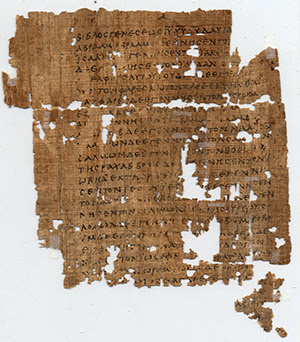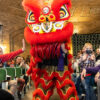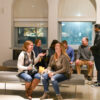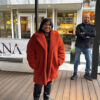Local Scoop
In Honor of the Pope Visit, Penn Museum Creates Sacred Writings Exhibit
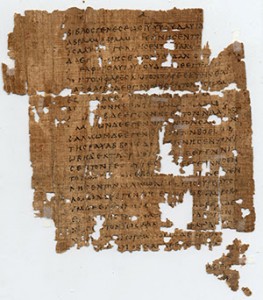 They are treasures that have survived centuries and even millennia: one of the world’s oldest fragments of the gospel of Saint Matthew; the first Bible printed in the Americas, in the Native American Massachusett language; a New Testament Bible published in twelve languages in Nuremberg, Germany, 1599; the earliest version of the Mesopotamian flood story, pre-dating the Biblical story of Noah, written on clay over 3,500 years ago.
They are treasures that have survived centuries and even millennia: one of the world’s oldest fragments of the gospel of Saint Matthew; the first Bible printed in the Americas, in the Native American Massachusett language; a New Testament Bible published in twelve languages in Nuremberg, Germany, 1599; the earliest version of the Mesopotamian flood story, pre-dating the Biblical story of Noah, written on clay over 3,500 years ago.
In honor of the first visit by Pope Francis and the World Meeting of Families in Philadelphia, the Penn Museum, in conjunction with the Penn Libraries, offers Sacred Writings: Extraordinary Texts of the Biblical World, a special exhibition of rare artifacts from the Museum Collection and rare books and manuscripts from the Penn Libraries. On view August 15 through November 7
, Sacred Writings provides the centerpiece experience for a Museum visit, where a special focus on the ancient Near East, Egypt, and the Canaan and Ancient Israel galleries and beyond affords visitors a unique opportunity to delve into ancient cultures and Bible-era art and artifacts.
Ten texts are featured in Sacred Writings: Extraordinary Texts of the Biblical World:
Treasures from the Penn Museum:
One of the world’s oldest fragments of the gospel of Saint Matthew, written on papyrus and dating to the 3rd century CE, was once part of a codex (book). This fragment, written in ancient Greek, contains the beginning of the Gospel of Matthew (Ch 1. Verses 1-9, 12, 14-20), which begins with the lineage of Jesus, then describes how Mary became with child by the Holy Spirit.
An ancient clay tablet in Sumerian cuneiform from the site of Nippur in Mesopotamia (now in Iraq), ca. 1650 BCE, contains the earliest version of the Mesopotamian flood story. A version of this tale becomes incorporated into the Epic of Gilgamesh, and tells of a flood that destroyed humankind; the story closely parallels the biblical story of Noah.
Two folios from a richly decorated, illuminated Qur’an from Iran, copied and signed by its scribe in Hamadan in 1164. The copy is written with black ink in cursive Naskh Arabic script, and features the complete text of the Qur’an, with commentary in red script. The exhibited pages feature the Surah Nuh (Noah), with a mention of the Flood and Noah’s role as admonisher.
Treasures from the Penn Libraries’ Collections:
 An illuminated Latin Bible produced in Arras, France in the late 13th century.
An illuminated Latin Bible produced in Arras, France in the late 13th century.
The first authorized Roman Catholic translation of the New Testament Bible into English, printed at Reims, France, through the efforts of English Catholic exiles, in 1582.
The first complete Bible printed in the New World, a monumental translation of the Bible into the Native American Massachusett language, by Puritan missionary John Eliot, in 1663.
A polyglot New Testament Bible compiled by German scholar Elias Hutter with side by side text in twelve languages—Syriac, Hebrew, Greek, Latin, German, Czech, Italian, Spanish, French, English, Danish, and Polish—printed in Nuremberg in 1599.
A late 15th century Italian illustrated manuscript copy of Werner Rolevinck’s history of the world detailing events from the creation to the election of Pope Sixtus IV.
An early 16th century Rabbinic Bible from the famed Hebrew printing house of Daniel Bomberg in Venice, Italy.
A limited edition contemporary Bible from the Pennyroyal Caxton Press, 1999, designed and illustrated by Barry Moser.
Bringing together scholars from diverse areas at the University of Pennsylvania, Sacred Writings: Extraordinary Texts of the Biblical World is co-curated by Dr. Mitch Fraas, Curator, Special Collections, the Kislak Center for Special Collections, Rare Books and Manuscripts, University of Pennsylvania Libraries; Dr. Renata Holod, Curator, Near East Section; Dr. Phillip Jones, Associate Curator and Keeper, Near East Section, Penn Museum; Dr. Steve Tinney, Associate Curator-in-Charge, Near East Section, Penn Museum; and Dr. Jennifer Wegner, Associate Curator, Egyptian Section, Penn Museum.
Bible Era and Bible Region Galleries
 In addition to the special exhibition, visitors interested in the biblical era and region can step back in time to explore rare art, artifacts and large-scale photographs in several galleries: the Museum’s renowned Egypt (Sphinx) Gallery and a side gallery, Amarna, Ancient Egypt’s Place in the Sun; Iraq’s Ancient Past: Rediscovering Ur’s Royal Cemetery; Canaan and Ancient Israel; and Sacred Spaces: The Photography of Ahmet Ertug, featuring spectacular large-scale photographs of Byzantine-era churches in Constantinople (Istanbul) and the Cappadocia region of Turkey.
In addition to the special exhibition, visitors interested in the biblical era and region can step back in time to explore rare art, artifacts and large-scale photographs in several galleries: the Museum’s renowned Egypt (Sphinx) Gallery and a side gallery, Amarna, Ancient Egypt’s Place in the Sun; Iraq’s Ancient Past: Rediscovering Ur’s Royal Cemetery; Canaan and Ancient Israel; and Sacred Spaces: The Photography of Ahmet Ertug, featuring spectacular large-scale photographs of Byzantine-era churches in Constantinople (Istanbul) and the Cappadocia region of Turkey.


